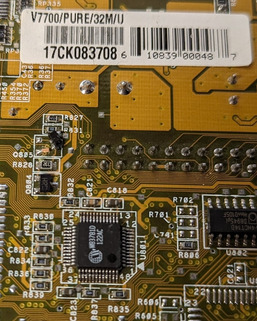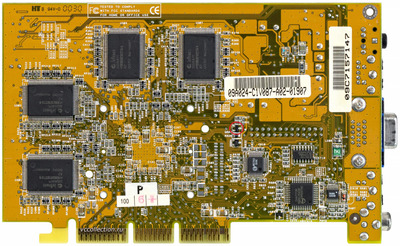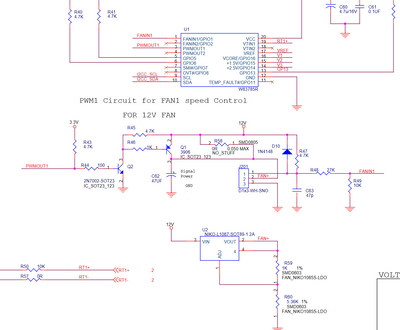Thank you for checking, if the pin nearest to the Q805 text is ground (i/o bracket is great) then that confirms it's essentially the same as the schematic excerpt I've shared, there are only minor differences in resistor values and maybe differences later in the circuit.
Haha yep, I was thinking of asking "does the fan spin"? Well technically you seem to have avoided the problem already. If my understanding is correct, your Q804 is equivalent to Q1 - 3906 (PNP transistor) in that schematic excerpt. The Q805 is I'm pretty sure equivalent to Q2 - 2N7002 (N-Channel MOSFET, like NPN transistor) on that excerpt. When the PWM signal goes low, that opens the gate of Q2 which pulls the input gate of Q1 low (the N part, which is otherwise stuck high @ 12v). When that opens, the 12v power is allowed to go through Q1 and into the fan's power input (P > P).
The PWM signal allows that fan power input to turn on and off very rapidly, allowing for fan speeds slower than 12v / 100% without directly altering the voltage. Without the PWM signal being able to alter the flow of the PNP transistor's gate by pulling it to ground, the PNP transistor should never make the connection between 12v and fan voltage, so the fan shouldn't spin, or maybe it'll run at a lower speed 😀 not really worth diagnosing further.
quicknick: Thanks 😀 I see two NPN 3904 transistor codes match up with PO4 and K1N, which is great! That means the circuit should work how I'm saying and how the schematic is laid out, but uses a slightly different component, which performs the same function in the same way.
OP: since you're not using the original fan, this missing component doesn't really matter. I recommend cleaning off the remaining bits of that transistor to avoid a risk of it shorting anything, ideally with a soldering iron with a bit of flux, looks like there's not much left to worry about though..
The Windows protection error could be down to driver version, AGP drivers, all sorts. I think your testing it in this state is fine now we know you're not using the original fan. Check the board for other damaged components perhaps if you still get oddness.
You can test out the ram separately from the OS with this nice DOS-boot-disk type utility VMTCE: https://sourceforge.net/projects/vmtce/files/ Something I used extensively going through my box of scrap video cards.


